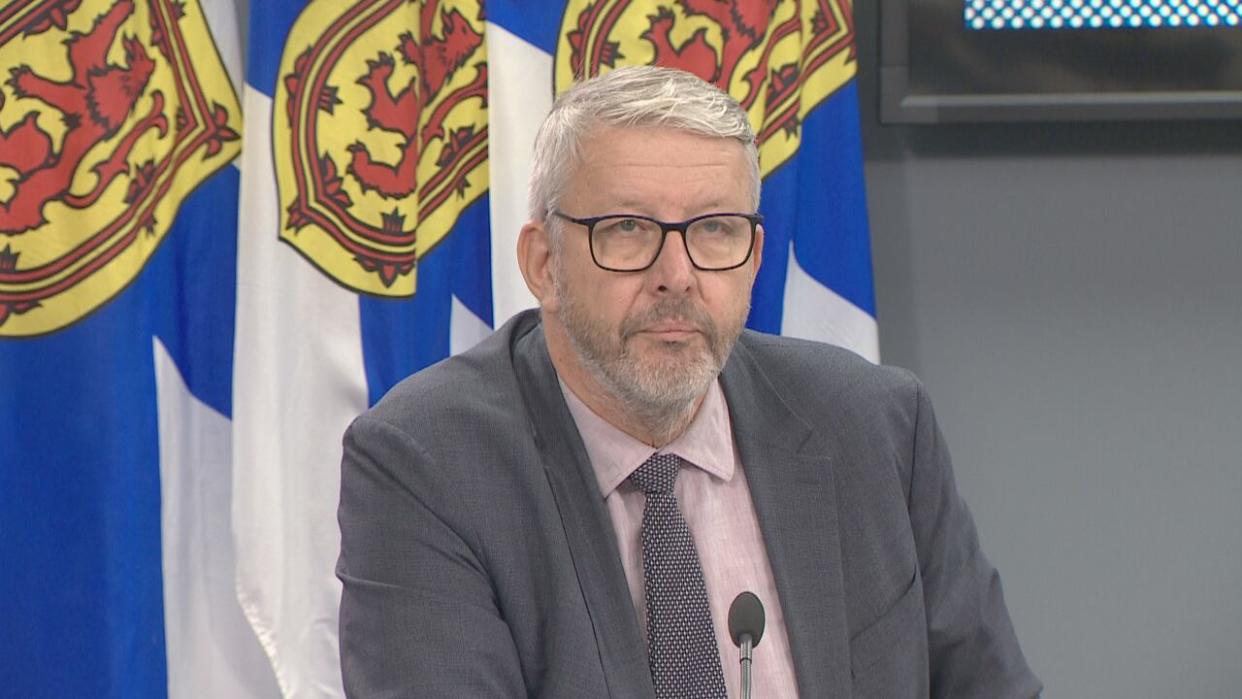N.S. infrastructure fund so far favours Tory-held districts

The minister responsible says politics has nothing to do with it but opposition leaders say it's difficult to ignore how much municipal infrastructure funding is finding its way to districts held by Nova Scotia's governing Tories.
With a series of announcements in Cape Breton Regional Municipality on Tuesday, the provincial government has now allocated about a third of the money from its municipal capital growth program. The $102-million fund is intended to help municipalities with items such as water and wastewater infrastructure, accessibility measures, climate change adaptation and brownfield redevelopment preparation.
As of Wednesday, 23 projects have been announced: 16 in Tory districts, four in Liberal districts, two in districts represented by the NDP and one that covers both a Liberal and Tory district. Of the $33.7 million doled out so far, about 77 per cent of the money has gone to projects in Tory districts. A project that will see wastewater upgrades in Kings County that straddles a Tory and Liberal district will receive $3.2 million.
The program funding is matched by municipal contributions.
'I haven't put that lens on it'
The largest project announced so far was $10.7 million in Public Works Minister Kim Masland's district of Queens to help with expanded water and wastewater services to accommodate new housing developments. The total announced for CBRM from the province on Tuesday comes in at $4.75 million.
Other announcements topping the $1-million mark have included a water storage tank in Windsor, wastewater upgrades in Salem, Chester and Cookville, and sidewalk work in Cookville. All of those projects are in Tory districts.
Municipal Affairs Minister John Lohr said his focus has been on helping municipalities support more development, as opposed to what MLA represents a given area.
"We don't look at it in those terms at all," he said in an interview.
"We're doing things across Nova Scotia for Nova Scotians and I haven't put that lens on it."
There is a reality that the Tories represent the bulk of the province's rural districts, said Lohr, but that is not the basis on which funding decisions are made. The government added $70 million to the fund in February as a reflection of the demand from municipalities. He said projects funded through the program will enable the creation of 7,000 new homes across the province.
"Our province is absolutely changing right now and we're investing in that in every way that we can," said Lohr.
'Old-school' politics
Liberal Leader Zach Churchill accused the Tories of engaging in "old-school" political tactics from the 1970s and 80s, "where they pork barrel into their own ridings and areas that aren't held by government members tend to be neglected."
"I really think they've brought our politics back a couple of generations here in Nova Scotia," Churchill said in an interview.
These type of programs should be distributed on a basis proportionate with the seat count in the legislature, said Churchill. The Tories hold 32 of 55 seats in the House, about 58 per cent. With 15, the Liberals hold 27 per cent of the seats. The NDP holds six seats, or about 11 per cent. One seat is represented by an Independent MLA. One seat, Pictou West, is vacant and the subject of a byelection.
NDP Leader Claudia Chender said the distribution of the municipal capital growth program so far is part of a pattern by the government where announcements "are very explicitly connected" to their re-election campaign.
Nova Scotia's fixed election date legislation calls for a provincial election in July 2025, although an election could be called sooner.
There should be "some compelling, arm's-length analysis of infrastructure needs" to justify anything other than a proportional distribution of funds, said Chender.
Like Churchill, she drew parallels between this program and the way the Tories have handled the announcement of new schools. While schools in government-represented districts were announced not long after the release of last year's school capital plan, a year later the government has yet to say where four new schools slated for Halifax Regional Municipality will be located.
MORE TOP STORIES


